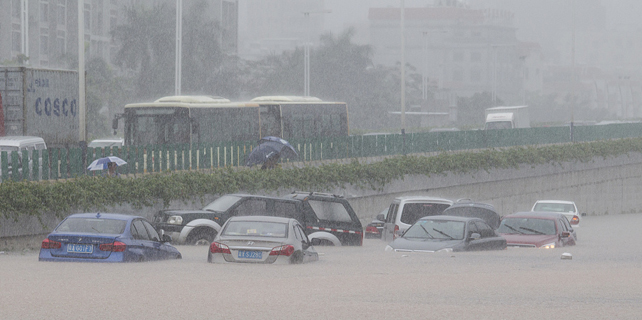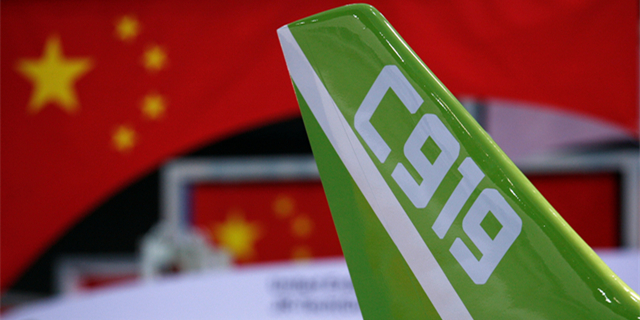The Korean nuclear issue: Past, present, and future – A Chinese perspective
At the beginning of the 1990s, the decline and disintegration of the USSR and the end of the Cold War broke the balance on the Korean Peninsula. North Korea, having lost its main backer, felt extremely insecure and the whole country fell into a "systematic predicament." Without assistance and support from the USSR, the DPRK's industrial and agricultural production plummeted. In contrast, the economy of South Korea soared in the 1970s, and continued to maintain high growth over quite a number of years.
On September 17, 1991, the United Nations General Assembly unanimously agreed to accept both North Korea and South Korea as members of the U.N. In 1991, when the DPRK-Soviet Union Agreement on Friendship, Cooperation, and Mutual Assistance expired, Russia, the successor state of the USSR, did not declare an automatic renewal of the treaty (and in 1994 annulled the agreement). Soon after, North Korean President Kim Il-sung visited China and discussed with Chinese leaders the disintegration of the USSR and its consequences.
Deng Xiaoping, in his meeting with Kim on October 5, 1991, commented on the current situation and stated that China needed to "mainly observe, hide light and cope with the situation with composure" when dealing with international issues. "To keep a low profile" became an internal guideline for China's diplomatic behavior. China had broken away from the Soviet Bloc long ago and did not see the end of the Cold War as an event that placed China in a leading position within the so-called socialist camp.
China and South Korea established diplomatic relations in August 1992, but well before then the two countries' exchanges and relations had already grown full-fledged. North Korea was un- happy and disappointed at this development and felt ever more isolated. It halted most high-level exchanges with China until 1999, when Kim Yong-nam, president of the Presidium of the Supreme People's Assembly, visited China.
It is perhaps still hard for most people to appreciate how profound the North Koreans' sense of crisis was at that moment. It looks as though the events of the early 1990s deeply upset North Korea and led to its decision to go its own way, including by making the "nuclear choice" as far as its security was concerned. Following the 1988 Seoul Olympics, the USSR/Russia and China decided to improve and develop their relationships with South Korea. In sharp contrast, the U.S., as one of the direct parties to the armistice, took no visible steps to improve relations with North Korea, nor did its ally Japan. The opportunity for cross recognition and simultaneous establishment of diplomatic relations was missed.
Around 1990, the U.S. discovered, through satellite imagery, that North Korea was secretly developing nuclear weapons. The IAEA decided to carry out inspections as required by the NPT. From May 1992 to February 1993, North Korea received six unscheduled inspections by the IAEA but disagreed on the objectives and results of the inspections. In March of the same year, the U.S. and South Korea resumed their joint military exercises, dubbed "Team Spirit," while the IAEA proposed a "special inspection" of North Korea.
Regarding these as a doubling down of pressure, North Korea announced its withdrawal from the NPT, triggering the first Korean nuclear crisis. The IAEA submitted a report on the Korean nuclear issue to the U.N. Security Council that April, and North Korea disregarded U.N. involvement, stating that it was essentially a problem that could only be settled with the United States.
After President Bill Clinton came into office in 1993 and the age of confrontation between the U.S. and Soviet camps ended, the U.S. regarded the proliferation of nuclear weapons and other weapons of mass destruction as its most realistic and direct security threat. In this context, resolving the Korean nuclear issue became the Clinton administration's primary concern in Asia and the U.S. started to re-examine the situation on the Korean Peninsula.
For some time, the prevailing approach of the U.S. was to exert pressure and take a hard stand on North Korea. The U.S. Senate adopted a resolution on June 16, 1994, to urge President Clinton toward taking action and getting the U.S. Army ready not only for "deterrence," but also for "repelling an attack from North Korea when necessary." However, after evaluation, the U.S. realized that military action would trigger North Korean attacks on South Korea, which would cause heavy civilian casualties. At this time, former U.S. President Jimmy Carter visited Pyongyang. He met with President Kim Il-sung and confirmed that North Korea was willing to negotiate with the U.S. on the nuclear issue. This development prompted the Clinton administration to change its attitude and reverse its approach in favor of negotiation.
From June 1993, North Korea and the U.S. con- ducted three rounds of high-level talks in New York and Geneva, which culminated with the two parties finally signing the U.S.-DPRK Agreed Framework. Its main contents included North Korea's agreement to give up its two graphite-moderated nuclear reactors that were under construction. The U.S. agreed to lead an international consortium to oversee and finance the construction of two 1,000-megawatt light water reactors with a total value of $4 billion, and to compensate the DPRK for the energy foregone due to the freeze of the graphite-moderated re- actors by providing 500,000 tons of heavy fuel oil annually. The whole course of negotiations mentioned above were held directly between North Korea and the U.S.
After the signing of the U.S.-DPRK Agreed Framework, the situation on the Korean Peninsula calmed down. However, the implementation of the agreement was very slow. The U.S. did take the lead in establishing the Korean Peninsula Energy Development Organization (KEDO), and some funds were raised internationally to transport heavy fuel oil to North Korea to help overcome the North Korean energy shortage. Over 8,000 spent fuel rods from the Yongbyon reactor were removed and sealed up. But both the planned dismantling of the reactors and the construction of the light water reactors by the U.S., Japan, and South Korea were consistently delayed, and ultimately never carried out.
















